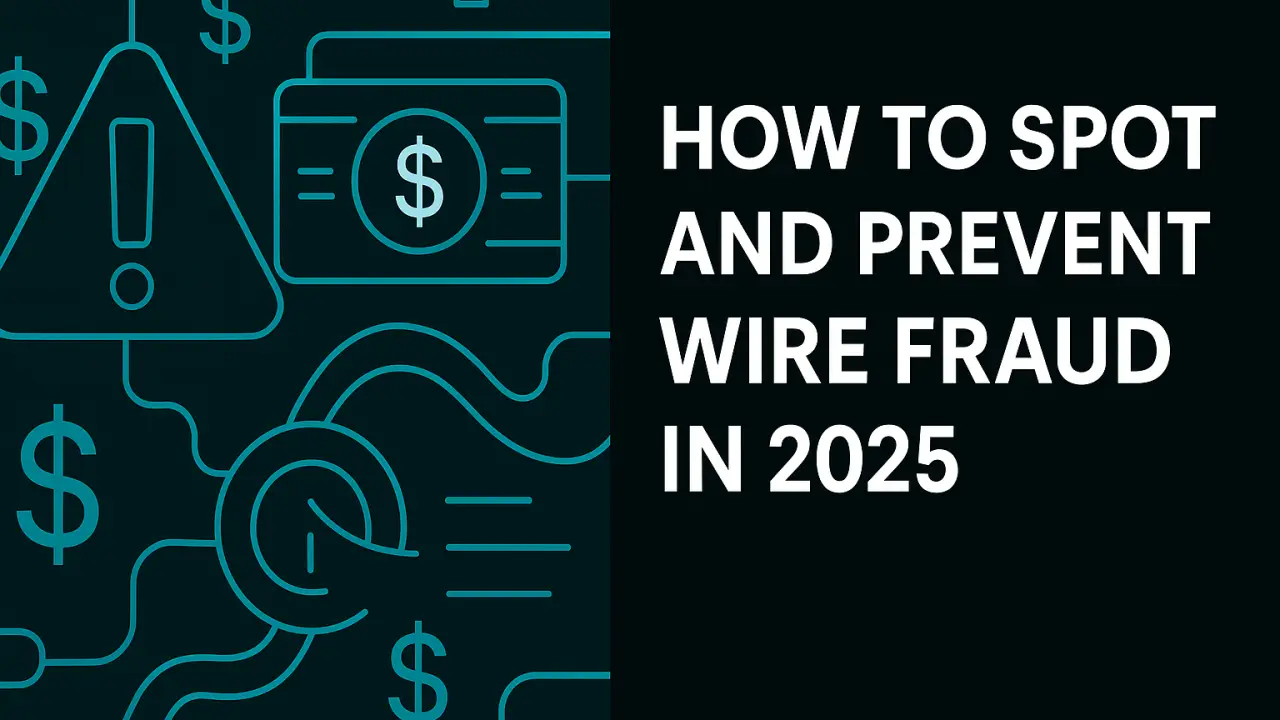THE SECURITY DIGEST
Security News, Products, & Best Practices

Don’t Let Scammers Steal Your Hard-Earned Money — Protect Your Business and Clients Today
How to Recognize and Prevent Wire Fraud in 2025
Wire fraud is one of the fastest-growing forms of financial crime—and it’s costing individuals and businesses billions every year. As transactions become more digital, scammers are finding new ways to trick people into sending money to fraudulent accounts.
At DMG Security & Co., we believe security goes beyond physical protection. It’s also about safeguarding your assets and information. Here’s how to spot wire fraud and stop it before it’s too late.
What is Wire Fraud?
Wire fraud is a type of scam that involves deceiving someone into transferring money electronically to a fraudulent account. This can happen through email, phone calls, text messages, or online platforms. Once the funds are wired, they’re often impossible to recover.
Wire fraud is often linked to Business Email Compromise (BEC) schemes, where attackers impersonate a trusted figure—like a company executive, vendor, or financial officer.
How Does Wire Fraud Work?
Scammers Typically:
1. Hack or spoof a business or individual’s email account.
2. Send a request to wire money—often urgent and seemingly legitimate.
3. Include realistic-looking invoices or wire instructions.
4. Use urgency to prevent verification.
Common Wire Fraud Scenarios
• Fake Vendor Payment Requests – Criminals pose as a regular supplier and provide new banking instructions.
• CEO Impersonation – An executive appears to request an emergency wire transfer for a business deal or legal settlement.
• Real Estate Transactions – Fraudsters trick homebuyers or agents into wiring down payments to fake accounts.
• Legal Settlements or Contract Scams – Scammers impersonate attorneys or clients involved in sensitive transactions.
Warning Signs of Wire Fraud
• Unusual or urgent requests for funds
• New or changed wire instructions, especially close to payment deadlines
• Slight misspellings in email addresses (e.g., jsmith@examp1e.com)
• Pressure to act quickly and bypass normal verification steps
• Communication from personal or unknown email accounts
How to Prevent Wire Fraud
• Verify Every Wire Instruction – Always confirm changes via a known, separate communication channel.
• Implement Dual Authorization – Require two approvals for large or sensitive transfers.
• Train Your Team – Employees should know the signs of phishing and fraud.
• Use Secure Communication – Avoid sending wire details over unencrypted email.
• Lock Down Your Email Accounts – Use strong passwords and enable two-factor authentication (2FA).
• Have a Response Plan – Know who to contact if fraud is suspected or confirmed.
What to Do if You Suspect Wire Fraud
• Contact Your Bank Immediately – Request a recall or freeze on the wire transfer.
• Report It to the FBI’s IC3 – The Internet Crime Complaint Center (IC3.gov) tracks and investigates wire fraud cases.
• Notify Law Enforcement and Legal Counsel – Especially if client or company funds are involved.
• Review Your Internal Systems – Look for other potential security gaps.
Final Thoughts:
Wire fraud is evolving—but so are the tools to fight it. Staying vigilant, training your team, and having verification systems in place are your best defenses. At DMG Security & Co., we offer training and complimentary consultation services to help you secure your digital operations and protect what matters most.
Wire fraud is evolving rapidly, and no business or individual is immune—even those with solid security practices. But with awareness, training, and strong systems, you can stay ahead of scammers. First, build a culture of verification: treat every financial request with healthy skepticism, verify instructions through trusted channels, and don’t allow pressure or urgency to shortcut your process. Always use multi-layered security: strong, unique passwords; enforce two-factor authentication (2FA); and limit who can change banking or vendor details.
Keep your team’s fraud knowledge fresh. Regular training isn’t a checkbox—it’s a shield. Phishing tactics shift year to year, and what worked “last year” might be ineffective now. Also, plan ahead: develop a response protocol so everyone knows who to contact if suspicious activity emerges—your bank, legal counsel, internal security lead.
Finally, look at trusted sources for current trends and threat indicators. The FBI’s Internet Crime Complaint Center (IC3.gov) regularly publishes reports on Business Email Compromise and wire fraud, and organizations like the National Cyber Security Alliance offer resources and training programs you can use. DMG Security is here to help—if you want expert behavioral training or a risk review of your processes, reach out to us. Your vigilance today protects you tomorrow.
Interested in fraud protection training or risk consultation? Contact us today and let’s secure your future together.
Explore the Security Digest today and strengthen your knowledge, your safety, and your peace of mind.
The Security Digest – 04/11/25
